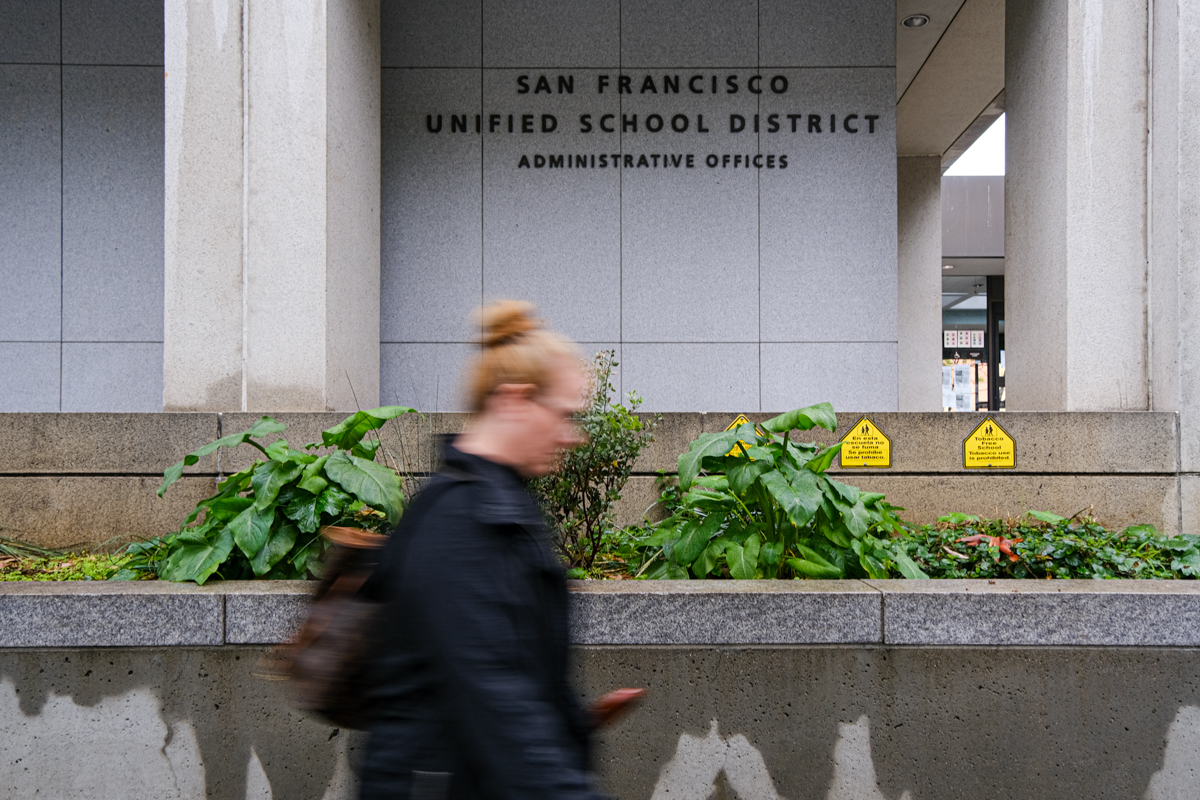San Francisco Unified School District may be forced to dip into its own dwindling reserves to close a $125 million deficit and stabilize its finances.
Driven by higher spending per pupil and low reserves, San Francisco public schools rank among the worst in the state in terms of financial stability, according to documents published by SFUSD this week. The district is weighing a budget plan that could mean cuts of more than 12% per school site and use of its already-low savings to close the deficit.
The school board discussed the budget plan on Tuesday ahead of a vote next month on a final version.
The proposed cuts amount to $90 million, with about $50 million coming out of 130 school site budgets, equivalent to 12.4% per site. The plan would slash another $10 million from “indirect services”—which include training and other support services—along with $15 million from operations and $5 million from administrative services, according to the district. Another $10 million would be cut from direct services, meaning teachers, staff or programs that directly serve students and families. An earlier budget draft suggested that the cuts would amount to 360 full-time jobs.
To bridge the remaining $35 million budget gap, the district plans to seek out a patchwork of grants and to use $25 million of its already-limited rainy day savings. Those reserves have been dropping steadily since the 2015-2016 school year, placing San Francisco lowest of any large Bay Area school district in reserve savings. The state requires SFUSD to keep 2% of its funds in reserves.
At the Tuesday night hearing, district board leaders expressed frustration that proposed budget cuts haven’t been more granular, and asked for more detailed line items and information about what resources are slated to remain at school sites and what might be on the chopping block.
“People want to know,” Commissioner Alison Collins said. “Teachers and parents and students want to know—how is my life going to be different? How are schools going to be different?"
San Francisco schools appear to be an outlier in more than one way, the documents from Tuesday’s meeting showed.
SFUSD spends more per pupil on salaries and benefits than any other large district in the Bay Area and across each of the top 20 school districts in the state. Compared to similar Bay Area districts, it also spends less money on direct services for students and families and more on indirect services.
As enrollment continues to decline—attendance is down 6.6% from 2019, and is expected to fall further in coming years—so will the district’s budget because of the state’s funding formula, called the Local Control Funding Formula, which allocates state funding based on daily attendance.
SFUSD’s budget plan is part of a state-mandated monitoring process that went into effect last month when the California Department of Education’s fiscal crisis team told the district that it is at risk of insolvency and installed a monitor to help stabilize its finances between now and 2024.
But that’s not the end of the road for budgeting decisions.
The current proposed cuts are based on assumptions about state support, which are subject to change alongside Gov. Gavin Newsom’s proposed budget for the next fiscal year. That budget will be released in early January and may affect SFUSD’s budget for the 2022-2023 school year, which will be finalized next June.
Alongside other school districts in the state, SFUSD is lobbying the state for further fiscal protections from enrollment declines during the pandemic. In the meantime, the district must continue to submit regular financial reports and is required to have a board-approved budget plan for the next two fiscal years by Dec. 15.
“You’re going to have to make some decisions by December that you don’t have all the information for,” state fiscal crisis team representative Elliott Duchon said.
